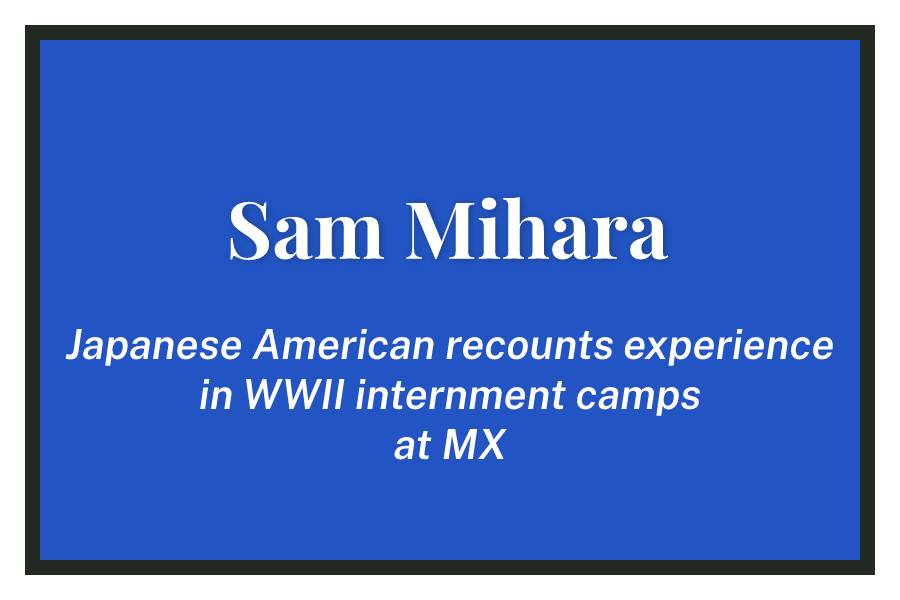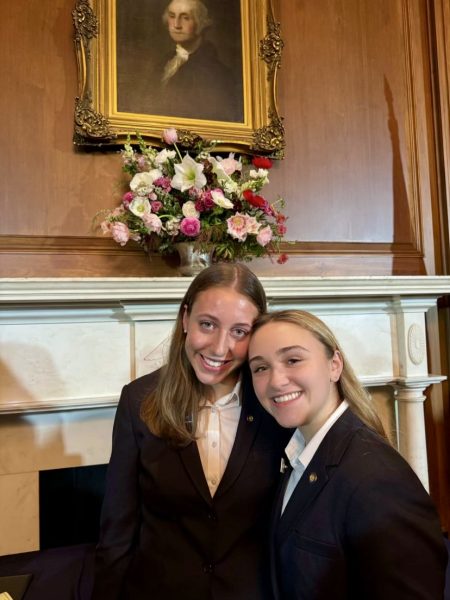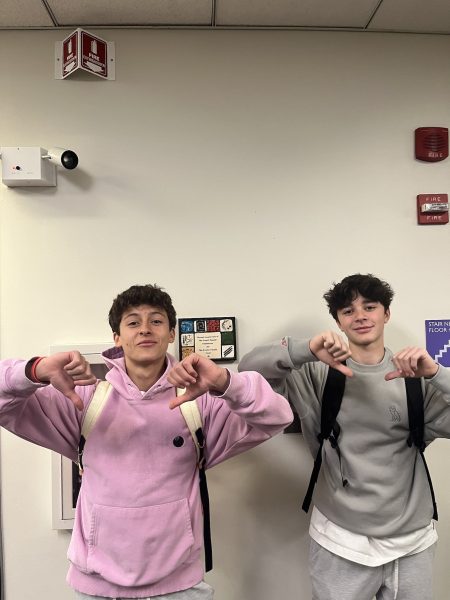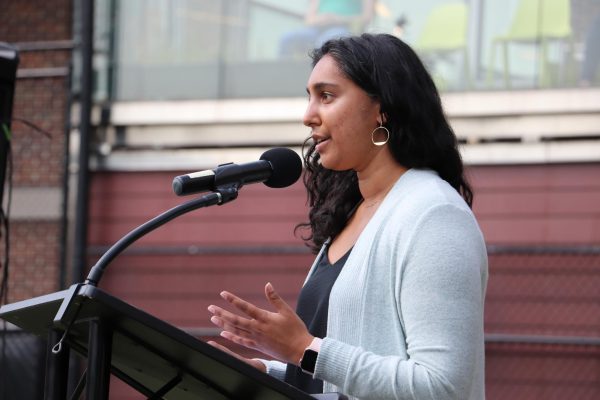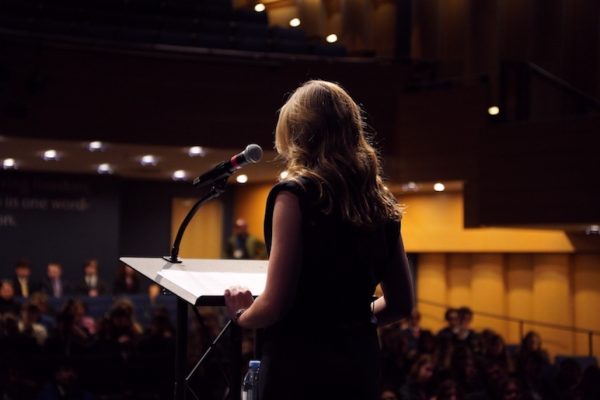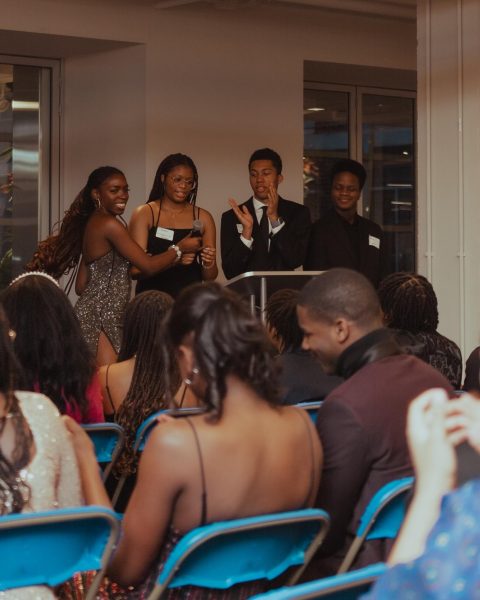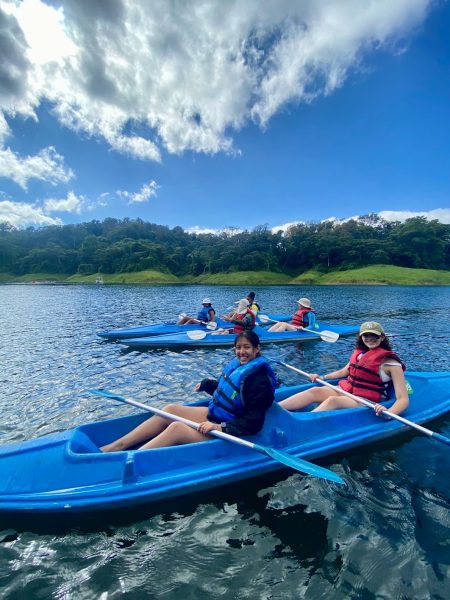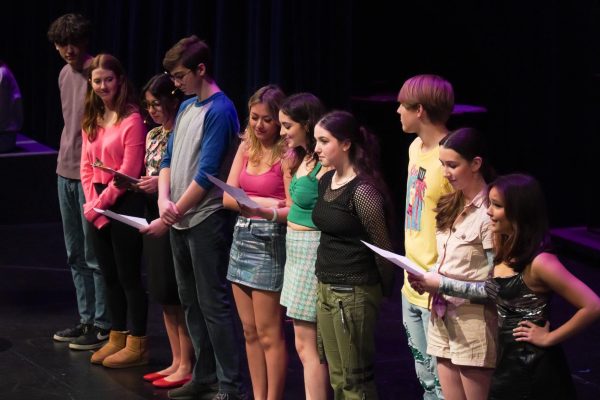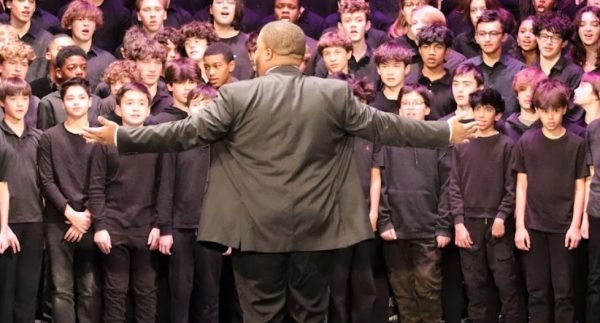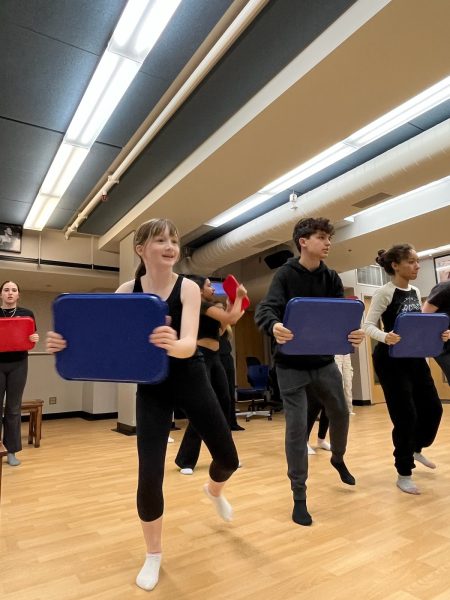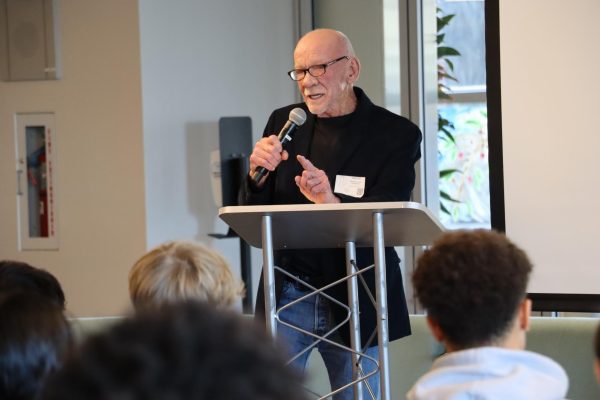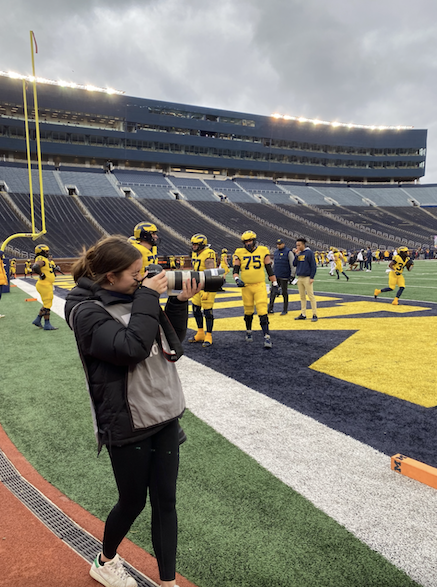Sam Mihara
Japanese American recounts experience in WWII internment camps at MX
Photo credit: The Parker Weekly
On Monday May 22, Sam Mihara, a 90 year old survivor of Japanese internment during WWII, spoke about the horrors of internment. Since retiring from his job as a rocket scientist for Boeing 10 years ago, Mihara has spoken to 98,500 people about his experience.
His talk revolved around the three elements which made internment possible: prejudice, hysteria, and failure of leadership. He illustrated each of these points through his own lived experiences when he was shipped off to a prison camp at just nine years old.
“I was born in San Francisco,” Mihara said. “My brother was born in San Francisco. We are American citizens by birth.” Despite his birthright citizenship in the US, he experienced prejudice from his neighbors and propaganda from the government.
He went on to show images of signs posted around his neighborhood and the media “spreading these awful propaganda cartoons” villainizing Japanese and German people following the attacks on Pearl Harbor.
Just months later, US Army General John DeWitt used his military powers to order all Japanese people living in the Western States into internment camps far inland without concern for their former employment or health.
“When an armed guard comes to your house and removes you and puts you in a prison, you’ve lost liberty, and there is no justice,” Mihara said. The US government wasn’t the only one complicit in the unjust imprisonment of Japanese citizens.
“This billboard went up a half a block from my house in San Francisco,” Mihara said. “Half a block away there’s a huge billboard that says ‘Bye Bye,’ and then the J word. I mean, how would you like it if somebody put a billboard next to your house and said, bye bye, whatever your racial or religious or other group affiliation might be?”
Soon after came signs posted on every door of every house with people of Japanese descent living in it with directions about their impending “evacuation” at noon on Thursday April 2. He was given a tag which he had to wear on his person. “It had my name and a prisoner number,” Mihara said. “The government gave me a prisoner number. I haven’t committed any crime, but still I had a prison number.”
When they arrived at Heart Mountain Internment camp in Wyoming, two more numbers were given to him: 14 block, 22c cell, and 26737D, his long term prisoner number. And conditions were abysmal. Schooling, for example, wasn’t prioritized. There was no elementary school. When prisoners asked why there was no elementary school, the response was “the local people said, stop. Don’t build anymore schools because why are you building new schools for prisoners when we, who are not prisoners, don’t get new schools?” Mihara recalled.
Living conditions were worse still. “Our family lived in a room that was 20 by 20,” Mihara said. “There were no inside walls. All we saw was the inside surface of the outside wall. And there was no electricity, no water and the beds, if you put them out, they’re really called military cots. There’s no room for much else.” For three years, Mihara, his family, and 127,000 other Japanese-Americans were forced to live in such conditions.
Around the camp were nine security towers each with a guard and 30 caliber rifle. Signs dotted the fences in English and Japanese warning that if they went beyond the fence, the soldiers had orders to shoot.
The winters were worse still. The first year, temperatures got down to -28 degrees and the prisoners had only their Californian clothes.
Medical care, however, became amongst the most problematic parts of the camps. His father had glaucoma but was able to find an ophthalmologist in San Francisco that could deal with the glaucoma and stop him from going blind. “But when he came to the camp, no one, there was not a single doctor who knew how to take care of glaucoma,” Mihara said, “and General Dewitt would not let him go back to see his own doctor for treatment. As a result, my father became blind in the camp. He never saw again. And that was a financial disaster for our family.”
This was not the end of Mihara’s family tragedies at Heart Mountain. “The worst was my grandpa’s death in camp,” Mihara said. “For a long time I wondered what really happened to Grandpa, cause I remember watching him in the hospital, and his body went down to skin and bones. When I found out, I got ahold of his records, and I read the records, and I could not believe what I was reading. The doctors who were mostly general practitioners, family doctors, thought he had colon cancer. So they tried an experiment on grandpa, and what they did was they starved the cancer.” His grandfather starved to death.
Three years later, after a legal battle which established Japanese internment as a violation of the Fifth Amendment, the government freed all those who were interned. After Japanese internment, the government sold the land and structures for $1 a piece on the condition that the farmers destroyed the evidence that the camps existed.
“The US military took over these [concentration camps in Europe camps and the US government said, we need to keep these as evidence of what Nazis did. So that’s why they’re perfectly preserved in Europe. But then the US is just the opposite. The government wanted to destroy the evidence.” Mihara said.
But the fight didn’t end with their release from the internment camps. There was a push for a formal apology from the government and restitution for financial losses resulting from internment. In 1988, President Ronald Regan signed a bill which created an office to oversee the distribution of $20,000 dollars to individuals who had been interned.
“Two years after that,” Mihara said, “I received a letter from President George HW Bush, the first George Bush. Inside the letter, it had the words, sincere apology. It also came with a small check to help pay for damages.”
Since retirement, Mihara has been working to educate people about Japanese internment be that through speaking throughout the country, through hosting educators to teach them about Japanese internment so they, in turn, can teach their students, and through the Heart Mountain museum dedicated to preserving the stories and horrors of Japanese internment at Heart Mountain.
Despite all his work on education and the increasing teaching about Japanese internment at schools, he fears the trend towards censoring difficult history in the United States.
He ended his talk by emphasizing that what happened to him could happen again. Calls to monitor and detain all Muslims after Ricard Ried, a member of al-Qaeda, tried to bomb a plane through a bomb in his shoe, detention and separation of kids at the border, and rise of Asian hate crimes at the outbreak of COVID-19 all have echoes of what he went through Mihara said.
He said, “everyone needs to watch out for indications of a combination of hate, hysteria and leaders who will not honor the constitution.”



